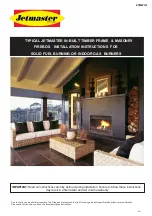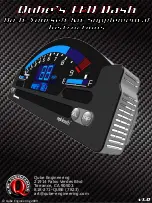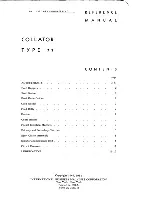
jective from eventually collecting dust and airborne pollutants on
the first optical surface. We recommend that you do not clean the
objective too often, no matter how frequently the urge to do so
may hit you. A few specks of dust on the lens will not be visible in
your images, as they are not in the focal plane and don’t block
enough light to measure, let alone be seen.
Depending on how often you use your scope, and the amount of
pollutants in your air, you may have to clean your scope optics as
often as twice a year, but generally no more than that – and prefer-
ably no more than once a year. If the front lens surface becomes
dusty, smeared, or shows fingerprints or any other surface build-
up, and you find it absolutely necessary to clean the lens, use the
following cleaning technique.
First, gently blow away any surface dust or particles with a clean
air blower (a child’s ear syringe or a photographer’s camel’s hair
brush with attached blower bulb, for example). The use of canned
or compressed air should be avoided, if possible, as the propellant
in the can may spit out and leave difficult-to-remove deposits on
your lens. If you must use compressed air to remove stubborn par-
ticles, use a high quality compressed air duster (of the R-134 pro-
pellant type). Do not tip or shake the can. Blow any loose particles
off the lens surface using short blasts at an angle to the glass, with-
out getting too close to the lens surface or aiming directly at it.
Next, moisten a ball of USP grade pure cotton with a few drops
of a photographic-quality optical cleaning solution designed for
multicoated camera and binocular lenses. You can use Formula
MC (available from many telescope dealers) or make your own
mixture of distilled water and a drop or two of mild soap. A well-
worn 100% cotton handkerchief also works well and Zeiss and
Kodak both make suitable cleaning fluids. Blot the entire surface
with the dampened cotton ball or cloth to pick up any stubborn
particles and to clean the surface. Exchange the cotton ball and/or
turn the cloth frequently so you always have a clean portion of the
cotton ball or cloth in contact with the lens.
Use only a drop or two of liquid – not so much that the fluid
could be wicked between the lenses by capillary action. Do not
drip the cleaning fluid directly on the lens. Do not, at any stage,
apply hard pressure. Using a fresh piece of cotton or a lint-free
white facial tissue, carefully clean the surface of the lens by wip-
ing from center to edge in a radial direction. Repeat the process
with denatured alcohol, using a blower brush to clean off any dust
that may fall on the lens as you clean it.
For the extremely fastidious, a final cleaning pass using high-
grade acetone will restore the lens surface to new condition. You
may notice a few faint streaks from the dried solvent. They will not
affect performance, but they can be removed with light pressure
and a Q-Tip slightly moistened with a small amount of alcohol or
acetone. A clean air blower will remove any remaining dust.
Avoid overcleaning your scope. The multicoatings on the lens
are quite hard and durable. However, frequent overzealous clean-
ing can scratch the coatings if all the dust particles (which are
often tiny flecks of windborne rock) are not removed before you
start pushing a damp tissue around the lens surface. Clean your
optics only when absolutely necessary. If you take proper care of
your TMB-80CF, optics cleaning should rarely be needed.
The optical tube and dew shield of the your TMB-80CF are made
of a high strength woven carbon fiber cloth encapsulated in a trans-
parent high gloss epoxy. The herringbone weave of the carbon fi-
ber cloth is easily seen through its clear epoxy coating. The carbon
fiber cloth is laid down by hand during the manufacturing process,
so a subtle seam along the length of the tube is sometimes visible
where the edges of the herringbone weave cloth meet.
The scope can become smudged with fingerprints during use,
but these will not harm the finish. A clean soft cloth slightly damp-
ened with plain water (or a little moisture from your breath and a
quick wipe with a clean handkerchief) is generally enough to re-
move fingerprints. Avoid abrasives, harsh chemical cleaners, or
organic solvents like benzene, alcohol, etc., as these may dull and
ruin the finish. They can certainly affect the optical coatings if
they accidentally drip or splash on the objective lens.
THE STAR TEST
We strive to make the best apochromatic optical systems avail-
able. You may find your lens may not test “perfect” during an ex-
tended and stringently-graded “star test,” particularly if the scope
has not fully reached thermal equilibrium before the test. This is
not an indication of a poor optic, but is rather due to the test star’s
complex wavefront continually changing as the seeing conditions
in our living atmosphere vary from moment to moment. No optic
is perfect, and every brand and model scope will show some error
in an extended star test. The sensitivity of the star test under per-
fect conditions is 1/20th wave P-V on the wavefront for third order
aberrations, and 1/60th wave for sharp (fifth order) aberrations. It
is highly unlikely that even the most ardent observer can see errors
of this small a magnitude on an extended object, even under very
good seeing conditions (which is when the atmosphere typically
presents a 1/4th wave P-V wavefront to the instrument).
The refractor also presents another factor: the change in spheri-
cal aberration with a change in wavelength found in all refractors
(sphero-chromatism). As a lens is tested in the longer (red) wave-
lengths, the lens becomes “under-corrected.” Tested in the shorter
wavelengths (blue), the lens becomes “over-corrected.” These over-
lapping corrections at different wavelengths change every refrac-
tor star test pattern from perfection.
However, TMB objectives are corrected at the peak visual wave-
length centered around 560nm in the green-yellow portion of the
visual spectrum. The eye sees over 80% of the visual detail at this
wavelength. It is the correction at this visual peak that makes the
difference between a merely good objective and a superb one. Our
lenses are figured for the best possible wavefront at green-yellow
wavelengths, for the sharpest images and highest contrast.
While star tests are interesting and useful, most observers spend
their nights enjoying extended and detailed objects, not simply ex-
amining sharply-focused points of light. We feel that the proof of
optical excellence is in the observing, not just in the testing.
A FINAL WORD
Thank you for your purchase of our TMB-80CF. We believe this
apochromatic triplet refractor will outperform any other telescope
type, inch for inch, in real-world observing and is the most trouble-
free telescope that you can buy. With a little care, it will last you a
lifetime. Use it often to enjoy the wonders of the night sky!
BRIEF SPECIFICATIONS
Aperture ................................................................... 80mm (3.1”)
Focal Length ..................................................................... 504mm
Focal Ratio ............................................................................. f/6.3
Objective Type ........... triplet apochromatic, FPL-53 ED element
Optical coatings ................................................. fully multicoated
Resolving Power (Dawes’ Limit) ...................... 1.45 arc seconds
Visual Limiting Magnitude .................................................. 12.0
Light Grasp Versus the Eye ................................................ 131x
Focuser .................... Starlight Instruments Feather Touch #2025
2” dual-speed Crayford with 10:1 ratio fine focus
and both 2” and 1.25” compression ring eyepiece holders
Focuser Travel ....................................................... 2.56” (65mm)
Tube Diameter ................................................. 90mm (3.5”) o. d.
Tube Length (lens shade retracted) ................... 15.25” (387mm)
Tube Length (lens shade extended) ..................... 18.5” (470mm)
Optical Tube Weight ........................................ 5.1 lbs. (2.32 kg)
Optical Tube Weight with tube rings ............. 6.9 lbs. (3.14 kg)
Case Dimensions ............................................. 22.75” x 9” x 7.5”
TMB Optical, Cleveland, OH 44131 E-mail: [email protected]
© 2008 by TMB Optical
Get user manuals:




















